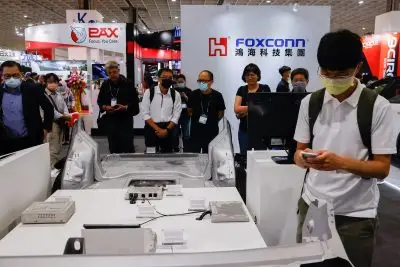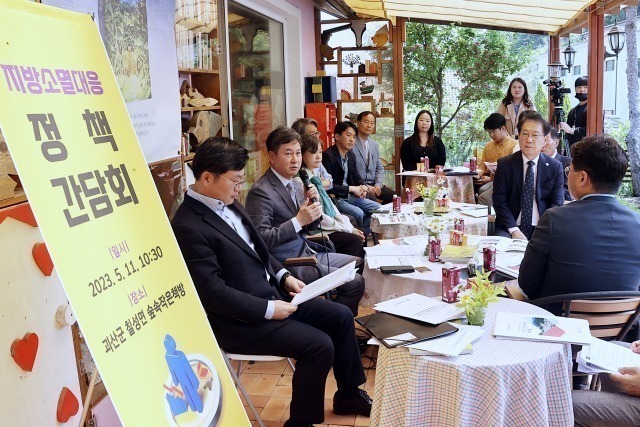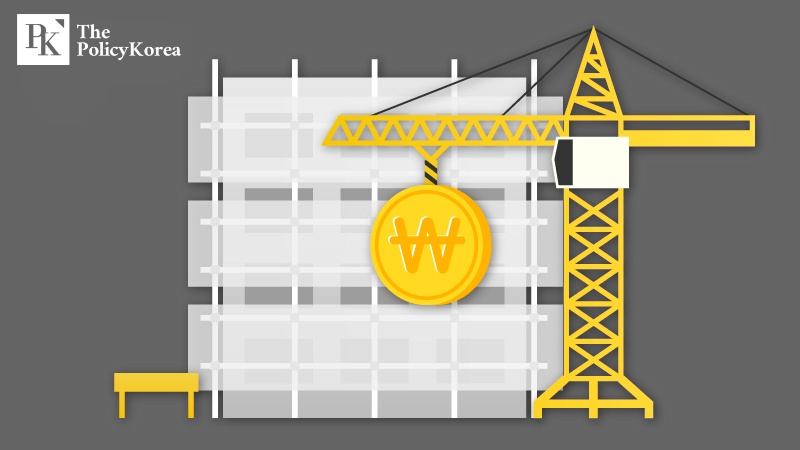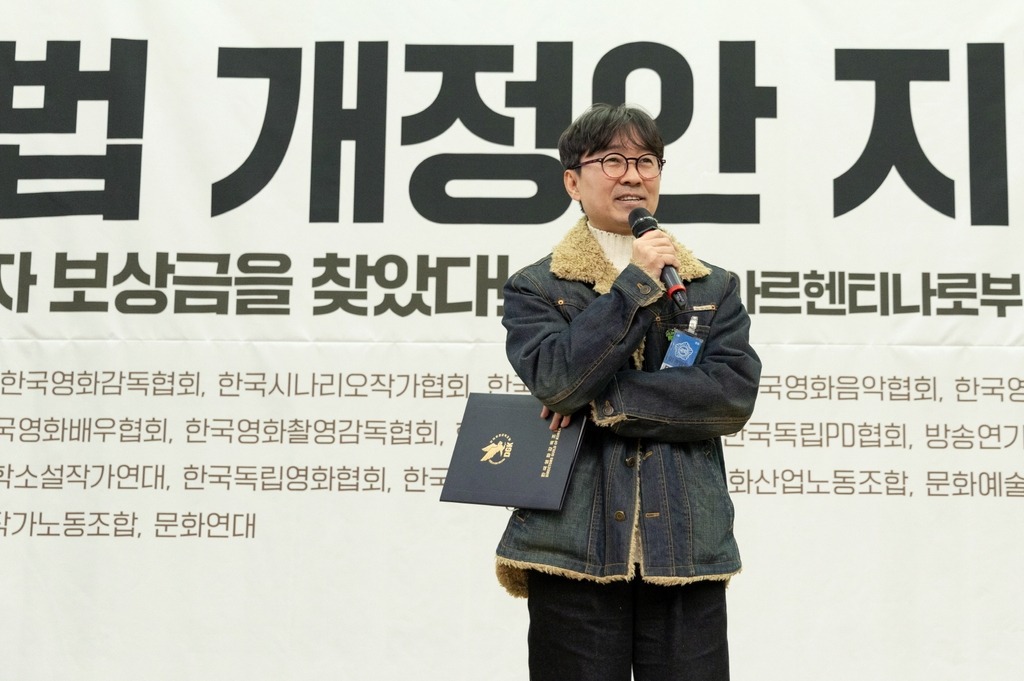[동아시아포럼] 미국의 산업정책이 글로벌 공급망에 미치는 영향
美 행정부, 글로벌 공급망 재편 위해 IRA·칩스법 도입 한국·일본·대만 등 아시아 국가들에 편향된 조치 포함돼 복잡하게 얽힌 공급망 속에서 美 경제에도 악영향 지적
[동아시아포럼]은 EAST ASIA FORUM에서 전하는 동아시아 정책 동향을 담았습니다. EAST ASIA FORUM은 오스트레일리아 국립대학교(Australia National University) 크로퍼드 공공정책대학(Crawford School of Public Policy) 산하의 공공정책과 관련된 정치, 경제, 비즈니스, 법률, 안보, 국제관계에 대한 연구·분석 플랫폼입니다.저희 폴리시코리아(The Policy Korea)와 영어 원문 공개 조건으로 콘텐츠 제휴가 진행 중입니다.
지난해 미국 정부는 자국 내 제조업 재건과 글로벌 공급망 재편을 위해 인플레이션 감축법(Inflation Reduction Act, IRA)과 반도체 지원법(Chips for America Act, 칩스법)을 도입한 바 있다. IRA가 도입된 지 1년 여가 지난 지금, 미국의 산업정책은 아시아를 비롯해 전 세계 공급망에 영향을 미치고 있다. 기후 위기에 대응해 녹색전환(green transition) 투자를 촉진하기 위한 미국 정부의 결정은 분명 가치있는 일이지만 아시아 국가의 입장에서는 ‘보호무역주의’로 비춰질 수 있는 편향된 조치를 포함하고 있는 데다, 최근엔 바이든 행정부의 조치가 자칫 미국 경제에도 악영향을 미칠 수 있다는 우려가 제기되고 있다.

IRA·칩스법 도입, 호주·일본·한국 등 이해관계 달라
IRA는 미국 역사상 가장 큰 규모의 에너지·기후 정책으로 향후 10년간 청정에너지와 기후테크 산업에 3,690억 달러(약 491조원)를 투입하는 내용을 골자로 한다. 바이든 행정부는 IRA를 통해 오는 2030년까지 미국 내 온실가스 배출량을 2005년 대비 40%까지 감축할 것으로 전망하고 있다. 하지만 이를 두고 국제사회에서는 보호무역주의라는 비판이 나오고 있다. 한 외신은 IRA와 칩스법를 언급하면서 “한때 자유무역의 수호자였던 미국이 지금은 국제무역 질서에 혼란을 야기하는 존재로 전락했다”며 “미국은 그동안 국제사회에서 막강한 영향력을 가지고 리더십을 행사해 왔지만 이젠 국익에 부합하지 않는다고 이유로 자신들이 만들어 놓은 자유무역의 원칙마저 버리려 하고 있다”고 지적하기도 했다.
IRA는 북미산 전기차에만 최대 7,500달러(약 980만 원)의 세액 공제를 적용하는 것이 골자다. 배터리 등 전기차 부품·소재 제작에 필요한 핵심광물도 미국 또는 미국과 자유무역협정(FTA)을 맺은 국가에서 생산돼야만 세액 공제 혜택을 받을 수 있는 것이다. IRA는 전기차·배터리 공급망에서 중국을 고립시키기 위한 전략이지만 호주, 일본 한국, 대만 등 아시아태평양 지역 국가들에게도 영향을 미쳤다.
먼저 호주는 핵심광물 부국이자 미국과 FTA를 체결한 협력국으로서 전기차·배터리 생산과 관련한 IRA의 혜택을 활용하기에 좋은 조건을 가지고 있다. 하지만 이미 다양한 국가와 거래하고 있는 호주 기업의 입장에서는 복합적인 이해관계가 얽혀 있다. 주요 광물의 채굴·가공과 관련한 글로벌 공급망에는 중국을 비롯해 미국과 FTA를 체결하지 않는 국가들이 다수 포함돼 있으며 해당 국가에서 생산한 광물을 사용할 경우 IRA 보조금 지원대상에서 제외될 가능성이 높다. 그렇다고 해서 미국 산업 정책의 혜택을 기대하고 새로운 광산이나 채굴·가공시설을 건립하는 것도 쉬운 일이 아니다. 공장을 설립하기 위해서는 대규모 자본이 확보돼야 하고 부지 선정 등의 절차에도 오랜 시간이 소요되기 때문이다.
美 정부 보조금 제한에도 생산시설 완전 이전은 어려워
한국과 일본은 전기차 밸류체인에서 호주와는 다른 입장에 있다. 두 나라는 중국과 함께 전기차·배터리 시장에서 순수출국 위치에 있으며 특히 배터리 생산의 핵심소재인 양극재와 음극재 시장에서는 중국에 이어 높은 비중을 차지하고 있다. IRA가 발표됐을 당시 일본은 미국과 FTA를 체결하지 않은 상태였기 때문에 당시 일본 내에서는 IRA가 전기차 부품 수출에 부정적인 영향을 미칠 것이란 우려가 제기됐다. 이에 일본 정부는 미국과 핵심광물에 대한 협상을 진행했고 올해 3월 양국은 일본산 배터리 핵심광물에도 IRA 세제 혜택을 제공하는 협정을 체결했다. 이와 함께 일본 정부는 미국 주도의 기후 위기 대응에 동참하기 위해 녹색전환을 위한 정책을 마련하고 그린수소 프로젝트 등을 통해 탄소중립을 위한 재정적 지원을 확대하고 있다.
한국과는 북미 지역에서 최종 조립한 전기차에만 세제 혜택을 주는 규정을 두고 갈등이 야기됐다. IRA가 시행되면서 한국산 전기차는 해당 요건을 충족하지 못해 보조금 대상에서 제외되기 때문이다. 하지만 지난해 12월 바이든 행정부는 생산지역에 대한 제한 없이 세액 공제 혜택을 적용받는 ‘상업용 전기차’에 리스회사가 임대용으로 구매하는 전기차를 포함했다. 이에 따라 한국에서 생산해 수출한 전기차를 리스회사 등이 사업 목적으로 구입할 경우에는 미국산 전기차와 동일하게 세액공제 혜택을 받을 수 있게 됐다. 한국 정부는 해당 조치를 통해 IRA 전기차 보조금 차별 조항으로 인한 피해를 일부 상쇄할 수 있을 것으로 기대하고 있다. 다만 세계 각지에 생산공장을 설립·운영하고 있는 한국의 전기차·배터리 기업들은 미국과 FTA 협정을 체결하지 않은 국가에서 원자재를 조달하고 있어 여전히 불확실성이 남아 있다. 호주 기업들과 마찬가지로 한국 기업들도 IRA 혜택을 적용받을 수 있을지 불투명한 상황에서 장기적으로 IRA가 한국의 광물·배터리·전기차 산업에 미치는 영향을 파악하기는 쉽지 않다.
대만의 경우 IRA보다는 반도체 지원법(Chips for America Act·칩스법)의 영향이 더욱 클 것으로 보인다. 지난해 8월 발효된 칩스법은 반도체 기업의 미국 내 설비 투자를 장려하기 위해 반도체 생산 보조금 390억 달러, 연구개발(R&D) 지원금 132억 달러 등 향후 5년간 총 527억 달러(약 75조5,000억원)를 지원하는 것을 골자로 한다. 하지만 현실적으로 미국 정부가 지원하는 보조금이 생산시설 이전의 유인책이 되기는 어렵다. 동아시아 기업들이 반도체·배터리·전기차 생산공장을 미국으로 이전하려면 부지 확보, 현지 고용, 생산시설 건립 등을 위해 대규모 자본을 확보해야 하는 데다 각종 규제로 인한 제한이 따르기 때문이다. 실제 미국에 생산공장을 건설하는 비용이 대만에 건설할 때보다 4~5배 많을 것으로 추산된다.
전문인력 부족·불필요한 리스크 등 득보다 실이 클 수도
미국 정부는 IRA와 칩스법을 도입하면서 관련 산업의 R&D나 인프라에 대한 투자를 유치하는 효과가 있을 것으로 기대했다. 하지만 칩스법이 지원하는 보조금은 대만, 한국, 중국 등이 자국이나 다른 나라로부터 지원받는 인센티브에 비해 적은 규모다. 또한 중국 등 동아시아 국가들이 IRA의 세액 공제 혜택을 받기 위해 이미 압도적인 이점을 갖고 있는 기존의 공급망을 재조정할 가능성도 낮다. 물론 미국이 지원하는 보조금이 생산공정과 관련한 결정에 어느 정도 영향을 미칠 수는 있다. 하지만 공장을 신설하는 데는 천문학적인 비용이 소요되고 절차나 과정을 진행하는 데도 오랜 시간이 소요되는 만큼 생산설비를 완전 이전하기에는 한계가 있다.
더욱이 최근 미국 내 반도체 생산시설을 유치한 지역에서는 인력 부족 우려도 제기되고 있다. 앞서 바이든 행정부는 미국을 반도체 등 세계 첨단산업 공급망의 중심으로 만들겠다며 ‘메이드 인 아메리카’ 계획을 발표했지만 지난 7월 미국 반도체산업협회(SIA)가 발표한 보고서에 따르면 2030년까지 반도체 산업이 6만7,000명의 인력 부족에 직면할 것이라고 지적했다. 실제 세계 최대 파운드리 업체인 대만 TSMC는 미국 내 전문인력 부족으로 애리조나에 건설 중인 반도체 생산공장의 가동 시기를 2024년에서 2025년으로 연기했다. 고숙련 전문인력의 부족은 결국 생산시설의 고용은 물론 부품 제조 등 반도체 주변 산업에 영향을 미치고 나아가 미국의 산업정책이 정해진 목표를 달성하는 데도 부정적인 영향을 미칠 가능성이 있다.
이렇다 보니 장기적으로 미국의 산업정책은 국가 안보를 강화하고 기후 위기에 대응하는 최선의 전략이 될 수 없다. IRA, 칩스법 등 자국의 공급망을 강화하기 위한 조치는 또 다른 비용만 야기하기 때문이다. 정책과 규제를 통해 더 저렴하면서도 우수한 품질의 외국산 제품을 외면하고 국내산 제품에 우선권을 부여하는 과정에서 산업계는 불필요한 비용과 리스크를 감당해야 한다. 이뿐 아니라 다른 국가에서 유사한 제도를 도입할 경우 더 많은 비용이 발생할 수도 있으며, 보호무역주의 논란을 촉발한 미국 정부의 결정은 국제사회에서 리더십을 약화시키는 요인이 될 가능성도 있다. 자국의 공급망을 강화하는 산업정책은 규제를 통해 탄소중립을 실현하는 데는 도움이 될 수 있으나, 한편으론 세계 경제를 내부지향적이고 폐쇄적으로 변화시키는 만큼 효과적인 기술과 노하우가 확산되는 데 더 많은 시간과 비용이 소요될 수밖에 없기 때문이다.
원문의 공동저자인 사무엘 하드윅(Samuel Hardwick)은 호주국립대학교(Australian National University, ANU) 크로퍼드 공공정책대학 아렌트-코덴 경제학과 연구교수입니다. 또 다른 저자는 경제·전략·정책 컨설팅 업체 만달라(Mandala)의 제이슨 타바리아스(Jason Tabarias) 파트너입니다.

US industrial policy’s mixed messages for global innovation
Though geared mainly at domestic outcomes, the rise of industrial policy in the United States is affecting global supply chains, especially in Asia. To the extent that they boost investment in the green transition, these policies are globally valuable. Yet they also contain discriminatory measures that harm Asian economies and, arguably, the United States itself.

One searing assessment comes from South Korea’s Hankyoreh newspaper: ‘The US is morphing from a guardian of free trade into a disrupter … despite being the leader of today’s international trade order, [it] is perfectly willing to dispense with those principles when they no longer seem to serve its national interest.’ These comments refer to two controversial laws: the 2022 Inflation Reduction Act (IRA) and CHIPS and Science Act.
The IRA offers upwards of US$360 billion in incentives, primarily tax credits, focused on electrification and green industries. These include extensive local content provisions. For example, to obtain a US$7500 electric vehicle (EV) credit, the EV and most of its battery components must be assembled in North America. Critical minerals in the battery must also be largely sourced or refined domestically or from FTA partners.
While the policies aim to draw economic activity and supply chains away from China, they have mixed impacts on other Asia Pacific economies, such as Australia, Japan, South Korea and Taiwan.
Australia, a critical mineral mining powerhouse and US FTA partner, is well-positioned to take advantage of the package, especially in minerals with battery and EV applications. But the picture is more complex for globally integrated Australian firms. Worldwide minerals production and processing often involves China and other nations without US FTAs, excluding them from IRA subsidies. Large capital requirements and long lead times to develop new mines and processing plants also limit the US policies’ influence.
Japan and South Korea occupy a different place in the EV value chain. Both are major players in anode and cathode materials, behind only China. All three countries are net exporters of batteries and EVs. When the IRA was announced, Japan lacked a qualifying trade agreement with the United States. This raised concerns about the law’s impact on Japanese EV component supply. In response, the United States negotiated a critical minerals agreement with Japan, enabling Japanese firms to benefit from the IRA. Japan also instigated its own legislation and policy for green transformation, which includes government financial support for decarbonisation largely via green hydrogen initiatives.
Given the scheme’s requirement that final assembly take place in North America, EV tax credits also caused tensions with South Korea. The Biden administration partly allayed concerns by outlining a second track of credits for leased vehicles, which omits requirements on country of origin. This second track will partially offset some of the IRA’s trade-diverting effects.
For globally integrated South Korean EV and battery firms, which source raw materials from countries without qualifying agreements with the United States, uncertainty remains. Like some global Australian firms, the extent to which these manufacturers will be eligible for IRA benefits — and the long-term effects on the country’s minerals, battery and EV industries — remains unclear.
For Taiwan, the CHIPS Act, a division of the much larger CHIPS and Science Act, is perhaps more relevant than the IRA. The CHIPS Act allocates US$52.7 billion to boost US semiconductor manufacturing. Most of this expenditure is for fabrication facilities, with US$11 billion for chip research and development (R&D).
There are limits to how much semiconductor, battery or EV production can be shifted to the United States from East Asia, due to divergent costs of labour, land, regulatory compliance and construction. Construction costs for US manufacturing plants alone are estimated to be ‘four to five times greater’ than in Taiwan.
CHIPS Act subsidies are still smaller than reported Taiwanese, South Korean and Chinese support programs. Even IRA-scale financial incentives are insufficient to reorient supply chains in which China, or any country, has overwhelming advantages. Subsidies shift decisions at the margins, but some facilities will remain too expensive or the lead times too long to set up domestically.
There is also emerging evidence of skilled labour shortages in key US states associated with semiconductor manufacturing, which might have impacts for adjacent sectors, labour costs and the ability to deliver on CHIPS Act and IRA policy goals.
Many aspects of these US efforts have merit, not least the significant investment in R&D and infrastructure to address the climate crisis. The trouble with policies like the IRA and CHIPS Act is the cost and risk that comes with preferences for domestic tradeable goods over cheaper or superior foreign equivalents.
For the United States, these preferences are not optimal for achieving the core objectives of bolstering national security and fighting climate change, especially over the longer term. Achieving these objectives will become even costlier if other countries launch similar provisions.
For the rest of the world, the US policies are another step away from its leadership of a functional multilateral trading system. While this system could be indispensable in building a greener global economy, in a more inward-looking world, the most effective technology and knowhow for reducing emissions will take longer to spread.
There are better ways to achieve US goals. But with a potential second Trump presidency looming, are these politically realistic? The value of US industrial policies depends on how we view their flaws — as strategic blunders or unfortunate but necessary compromises.
Samuel Hardwick is a Research Scholar at the Arndt–Corden Department of Economics, in the Crawford School of Public Policy, The Australian National University. Jason Tabarias is a Partner at the economics, strategy and policy consulting firm Mandala.



























